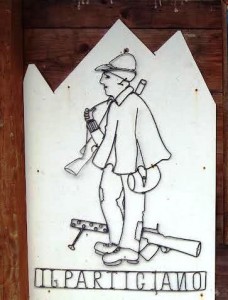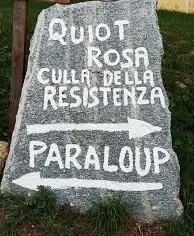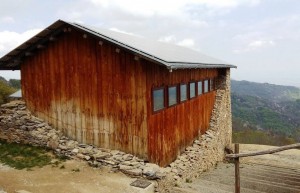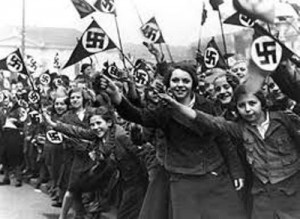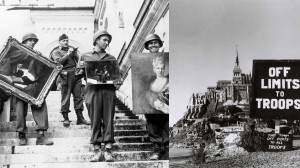“Dear former partisans, you've been heroes not because of the armed struggle, But first of all for the courage and dignity to rebel and say no to the authoritarian power and that in part was also warmonger. A boy of the partisan war”. These lines can be read on a sheet hanging on the door of a cabin of Paraloup, literally "defence from wolves", small Alpine Township of the municipality of Rittana, country belonging to the Stura Valley located in the province of Cuneo.
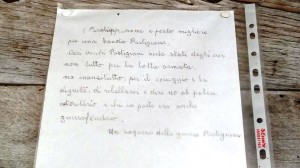
 
 
Sheet visible outside a cabin Paraloup Township
 
 
 
This place 1.360 meters altitude took some historical significance since it was the site of the first partisan band of Justice and liberty, one of the partisan groups more numerous after the "Brigate Garibaldi". Under the Green handkerchief, the men of the Brigade GL Italy Free were led by charismatic characters including Giorgio Bocca, Duccio Galimberti, Dante Livio Bianco and Nuto Revelli, to name just a few.
 
 
Stone visible upon arrival at Quiot Rosa, important communication point
 
 
 
 
The 20 September 1943 the first organized partisan in Piemonte (and probably in Italy) moved to the borgata Paraloup, perfect vantage point and cuneese plain check. The village soon became a fixed camp and also an enlistment, including dormitories and canteens.
 
 
The huts belonging to the Township of Paraloup were renovated and partially used as a Museum of memory
 
 
 
The cradle of the first partisan welcomed hundreds of young people involved in the resistance, men and women brought together by a single ideal: defend their territories to ensure a future free of any dictatorship.
Today Paraloup, the subject of a careful architectural restoration with the contribution of fondazione Nuto Revelli ", can be easily reached with a short walk of 30 minutes from Chiot Rosa, where you can leave your car. From opening a series of "paths of resistance", trails that only seven decades ago were paths from men and women searching for freedom and hope, all with the desire to build a better world.
Maria
 
